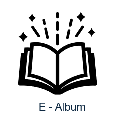
The Rajiv Gandhi Science Centre (RGSC), in collaboration with the Aeronautical Society of Mauritius (AeSM), successfully organised the 9th edition of the Model Glider Competition 2025. The finals were held on the 2nd of May 2025 at the Cote d’Or National Sports Complex. This event brought together budding innovators from secondary schools across the island, offering them a platform to showcase their creativity, engineering skills, and passion for aviation.
The growing participation over the years has been a testament to the MGC’s significance in the Mauritian educational landscape. The competition encouraged students to engage actively in STEM (Science, Technology, Engineering & Mathematics) through practical application and teamwork, nurturing a new generation of scientists, engineers, innovators, and problem-solvers.
The Model Glider Competition 2025 was more than a contest, it was an educational journey that challenged students to think like engineers, solve real-world problems, and experience the joy of seeing their designs to take flight. Through such initiatives, RGSC and AeSM aim to build a strong foundation for STEM education, ultimately preparing Mauritius to meet the scientific and technological challenges of the future.
Origin and Legacy of the Model Glider Competition:
The model Glider Competition began in 2016 as a collaboration between the RGSC and Captain Richard Twomey, a founding member of the AeSM. Captain Twomey, a former Royal Air Force pilot and aviation professional with over 30 years of commercial flying experience, envisioned the competition to inspire young Mauritians to explore careers in aviation and aerospace. His passion and commitment have left a legacy, with the competition continuing in his honour following his passing in July 2020.
2.Aims and Objectives of the Model Glider Competition
The primary aims and objectives of the MGC were to:
1. Promote hands-on learning and application of STEM concepts through aeromodelling.
2. Encourage students to explore the fundamentals of aerodynamics, flight mechanics, and engineering design.
3. Develop problem-solving skills and foster teamwork among participants.
4. Stimulate creativity and innovation by providing a platform for students to conceptualise, build, and test their own model gliders.
5. Raise awareness about careers in aeronautics, aerospace, and related engineering fields.
6. Honour the legacy of Captain Richard Twomey, a visionary in promoting aviation education in Mauritius.
3.Competition Format and Participation
The MGC was structured as an aeromodelling challenge where students worked in teams to design, construct, and fly model gliders. The competition targeted secondary school students in two categories:
1. Category 1: Grade 10 students
2. Category 2: Grade 12 students
Each team consisted of four (4) students, guided and mentored by a teacher from their respective institutions. The competition not only tested technical skills but also emphasised teamwork, innovation, and perseverance.



